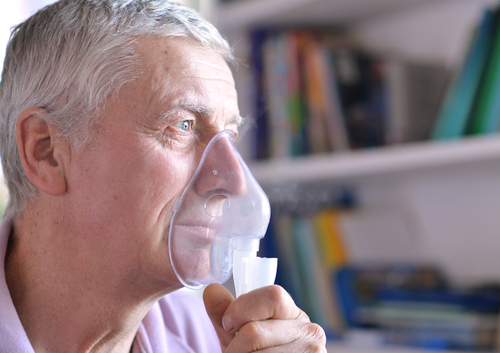A team of researchers from the Agency for Science, Technology and Research’s (A*STAR) Institute of Chemical and Engineering Sciences (ICES) and the National University Hospital (NUH) is working toward returning efficacy to drugs that treat respiratory system infections and antibiotic-resistant superbugs. The goal of the team is to combine drugs to combat bacteria that threaten to infect the respiratory system or agitate bacteria-linked pulmonary diseases including pneumonia, bronchiectasis, and cystic fibrosis.
 “Novel ways to deliver antibiotics to kill bacteria in the lungs and airways are important at a time when the population is aging and more people are expected to suffer from different kinds of respiratory infections in future,” said Raymond Lin, PhD, from the Department of Laboratory Medicine at NUH, in a news release from A*STAR. “The global spread of antibiotic resistance in bacteria means that new solutions to tackling them are urgently needed, both to effect better cure and to prevent the rise of multi-drug resistance. The next crucial step will be to translate laboratory findings to clinical application.”
“Novel ways to deliver antibiotics to kill bacteria in the lungs and airways are important at a time when the population is aging and more people are expected to suffer from different kinds of respiratory infections in future,” said Raymond Lin, PhD, from the Department of Laboratory Medicine at NUH, in a news release from A*STAR. “The global spread of antibiotic resistance in bacteria means that new solutions to tackling them are urgently needed, both to effect better cure and to prevent the rise of multi-drug resistance. The next crucial step will be to translate laboratory findings to clinical application.”
The combination utilizes antibiotics and muco-active agents to kill bacteria, such as Pseudomonas aeruginosa that predominantly affects cystic fibrosis patients, in a one-two punch. First, the muco-active agents acts to disrupt bacterial cell-cell communication by disrupting the protective mucus layer, and then the antibiotic agent directly kills bacteria. According to the news release, bacteria are destroyed completely, and the overall treatment works twice as fast as current leading-edge antibiotics.
An added benefit of the treatments is their inhalable route of administration. “Making the formulation inhalable and portable not only delivers a higher concentration of the drug to the lungs but also gives the added potential to be an effective out-patient treatment alternative,” said Dr. Desmond Heng, principal investigator at ICES. “Furthermore, if the disease is well-controlled in an outpatient setting with no further progression, costly hospitalization could be avoided.”
[adrotate group=”6″]
Importantly, this treatment scheme minimizes the chance for antibiotic resistance, a common problem of current antibiotic treatments. Moreover, the combination therapy is proposed to be effective against bacteria that have become resistant superbugs. The team at A*STAR has patented three drug formulations of three different antibiotics designed to fight against bacteria. All formulations can reduce infection by resistant bacterial strains of P. aeruginosa and Klebsiella pneumoniae to a greater extent (up to five times) than conventional antibiotics. Accordingly, small doses may be prescribed, further limiting the risk for antibacterial resistance.
“I am delighted that the work stems from the results of our expertise in inhaled novel formulations,” said Dr. Keith Carpenter, Executive Director of ICES. “This is an excellent example of how our collaboration with the local medical community is helping to translate our research from bench to bedside, and further developing innovative therapies for patients.”

